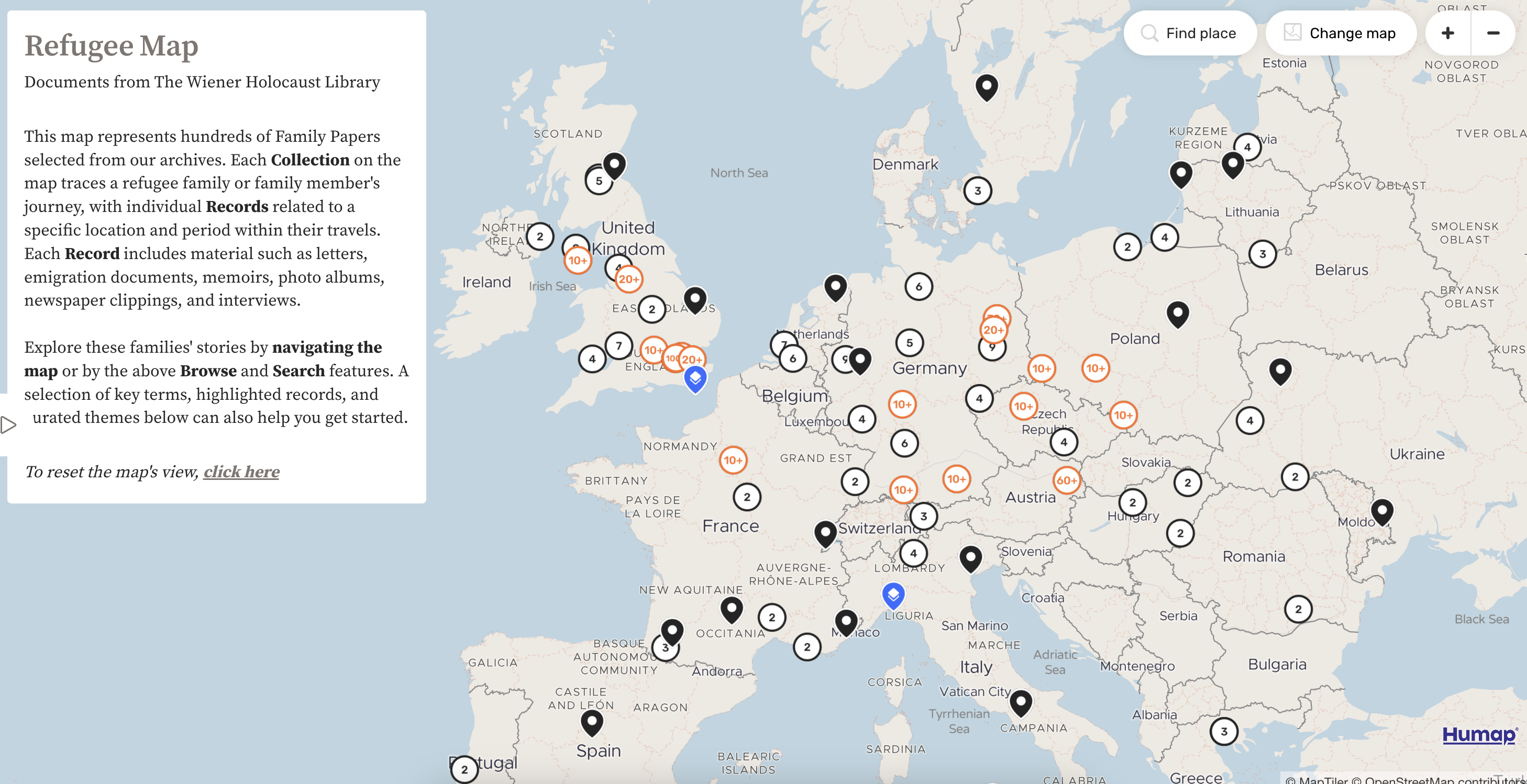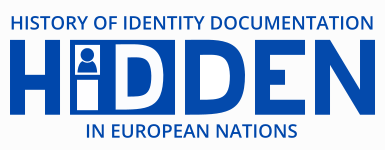Workshop: Wiener Library Refugee Map, organised by Working Group 2
By Dr Aisling Shalvey
Working Group 2 of the COST action arranged an online workshop with The Wiener Holocaust Library to hear more about their recent project to develop a website The Refugee Map, which features documents, photographs and stories relating to the lives of Jewish refugees who came to Britain The project is a dynamic and interactive method of displaying quite difficult topics and material to a wider audience in a multimedia and digital manner. The Wiener Library’s refugee map website states that it aims to ‘visually trace refugee journeys with documents from our collections, including handwritten diaries, photograph albums, identity and emigration papers, Red Cross letters and taped interviews. These documents on this digital resource reveal and preserve the stories of the individuals and families that fled Nazi antisemitism and persecution in the years before, during and after the Second World War.’ It is presented not only in a map format – enabling the individual journeys of refugees to be traced -, but also includes a search function through which users can search for by name of refugee, by place name or by taking a thematic approach and searching via key terms, such as for example, ‘Kindertransport’, or ‘internment’. Dr Barbara Warnock, the Senior Curator and Head of Education of The Wiener Holocaust Library explained to the group the origins and development of the project, and took us through the structure of the map website.
The Wiener Holocaust Library was founded in 1933, and is one of the most extensive archives on the Holocaust, the Nazi era and genocide. Their collections include over one million items, from press cuttings and photographs to eyewitness testimony, as well as extensive collections of documents relating to Jewish refugees from Nazism: the presentation of some of these resources on the Refugee Map website can aid in telling the story of those who migrated, including their identity documents and papers which can reflect the increasing difficulties experienced by individuals fleeing Nazi persecution. Dr Warnock presented the collections on the site to us, detailing the personal stories of many individuals including Ludwig Neumann, a German Jewish refugee to Britain, who tried to document what was happening through photographs. Dr Warnock illustrated the moving story of Pauline Howard, who sought refuge in Shanghai, and others, reflecting on their experience of statelessness, and how the global reach of these records can reflect the refugee experience.

In the discussion session, we reflected on how the Library’s predecessor organisation itself had to flee persecution, relocating several times in the face of threats from the Nazis.. The collection now contains numerous collections of refugee family papers, including that of Fred (ne Fritz) Kormis, on whom there is currently an exhibition at the Library showcasing his sculpture, art, and the materiality of his refugee experience. Some thought-provoking questions came from the working group, reflecting on the issue of balancing data privacy with scientific and educational use for the public, along with the challenges of representing individual stories in a visual manner when much of our experience of these records focuses on statistics. Dr Warnock explained how the map can be used not only for engaging the public with this difficult material, and encouraging further donations of material from family members, but also as a starting point for academic researchers to understand the extent and variety of the collection.
It is anticipated that a short term scientific mission will occur in the new year to further explore this cooperation, and look at how we can present documents on migration from archives in a more interactive manner that can engage the public. One of the deliverables of Working Group 2 is to compile an archive map of material that concerns the history of identity documentation and migration, encompassing Europe as a whole involving material in English and many other languages, along with a description on how one can access these collections. It is hoped that this map can act as a beneficial tool for researchers beginning to work on the topic of identity documentation and migration, to offer a starting point or a confluence of ideas, to see where these collections can be found.
Further information on the Wiener Holocaust Library collections can be found here: https://wienerholocaustlibrary.org/.
For the refugee map: https://www.refugeemap.org/

